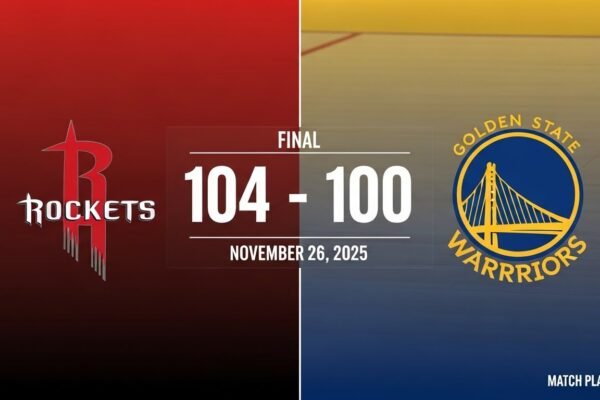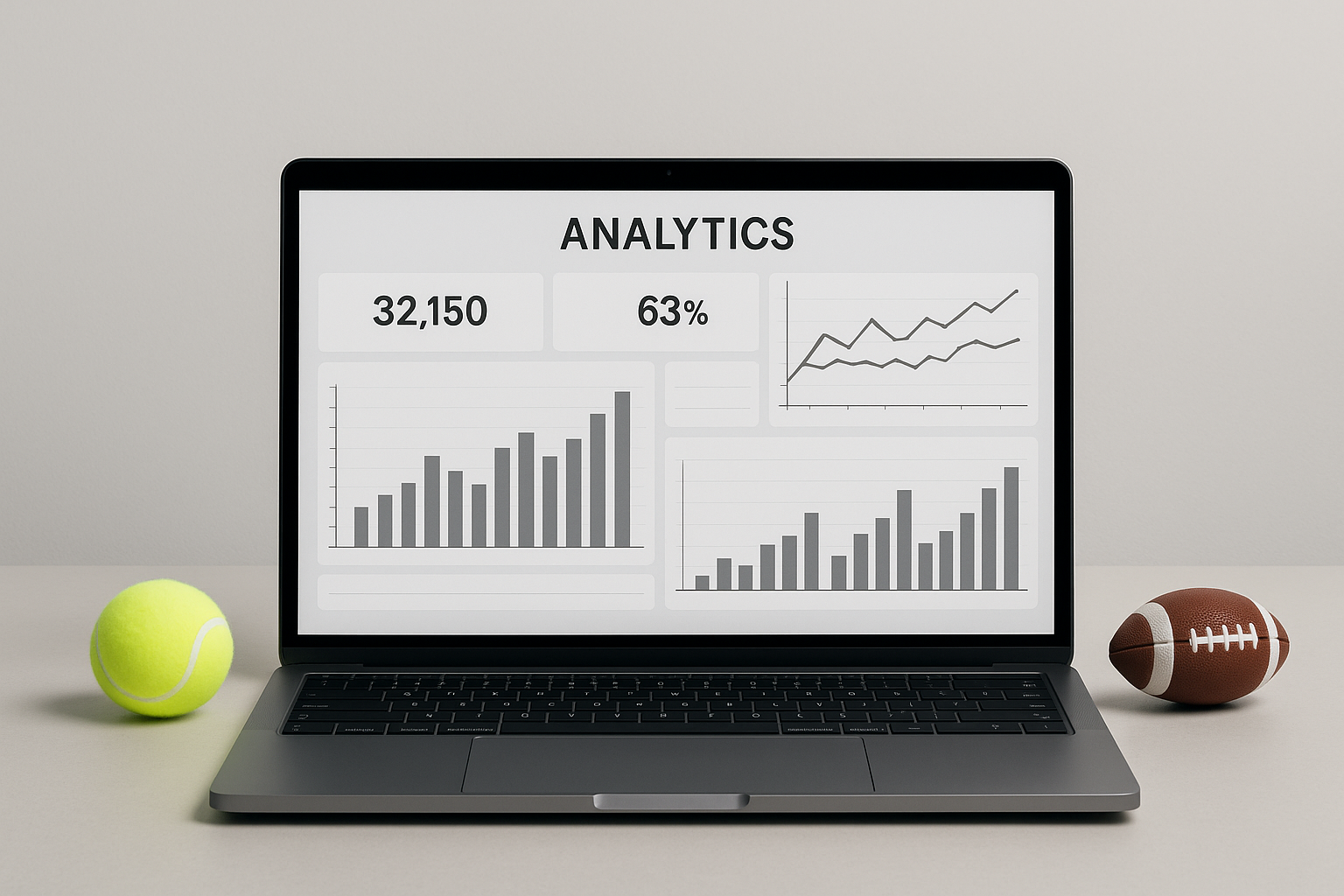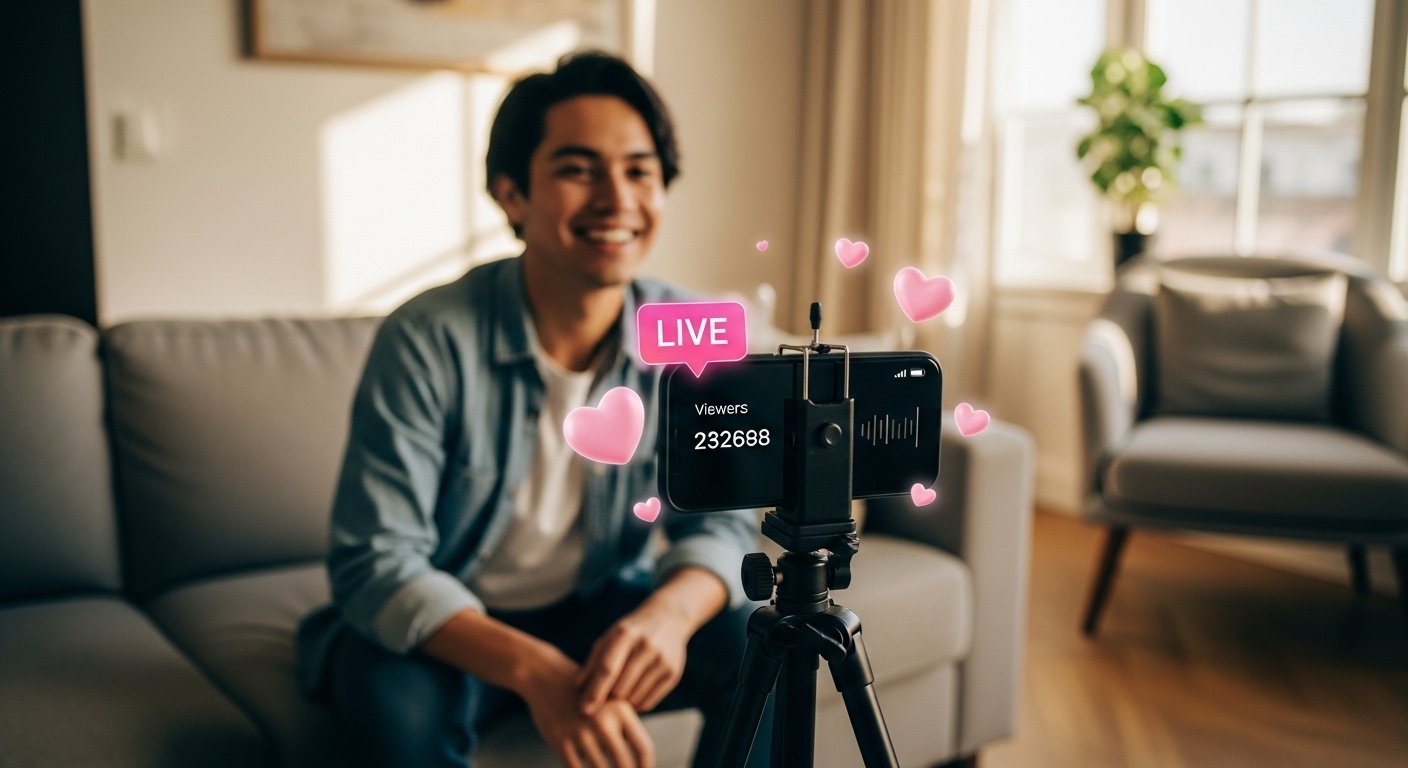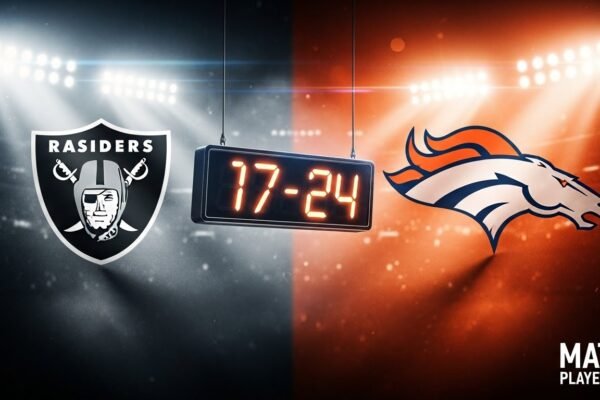
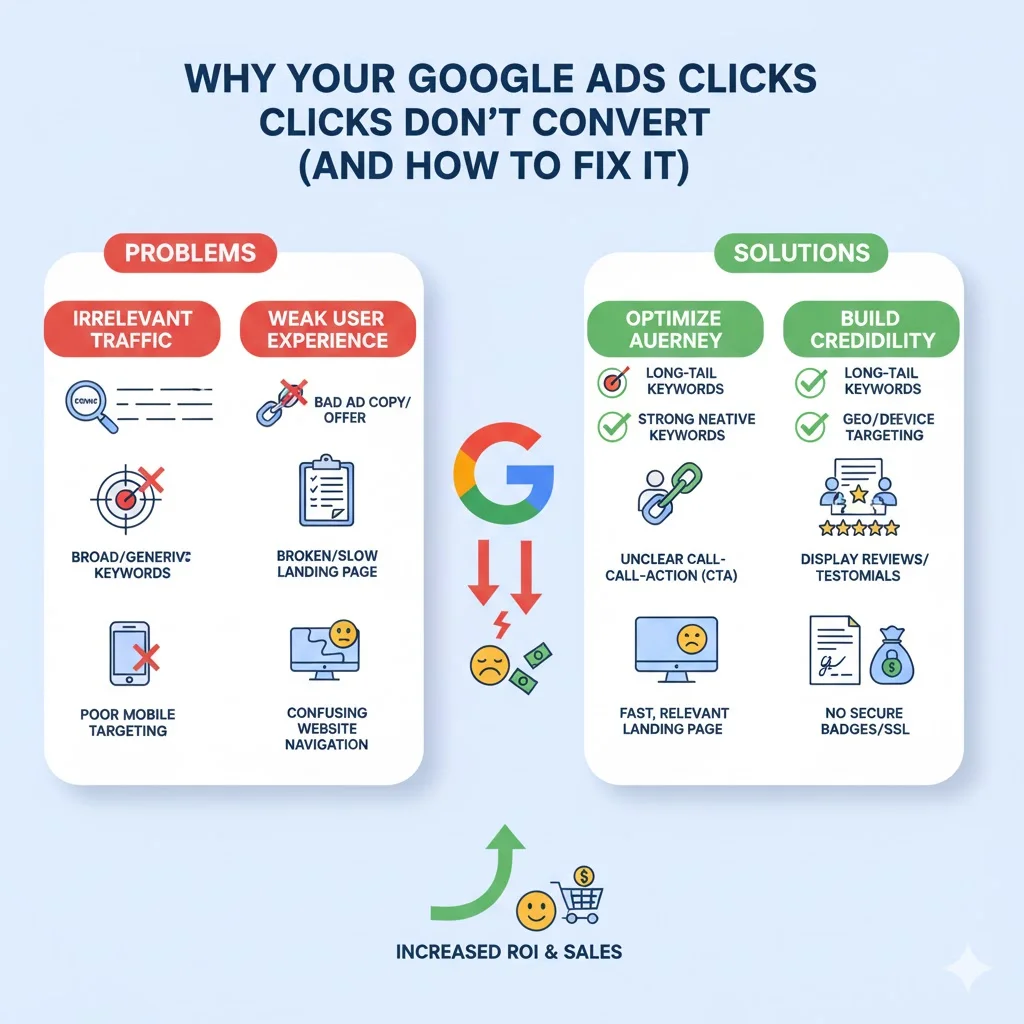
Why Your Google Ads Clicks Don’t Convert (And How to Fix It)
Last Tuesday, I reviewed an account for a furniture company spending ₹3.5 lakhs monthly. Their campaigns generated thousands of clicks, but conversion rates sat below 2%—pathetic for their industry. When I checked their landing pages, the problem was obvious. Ads promised “custom furniture at factory prices,” but the landing page talked about their 50-year history and founder’s story. Nobody cared. People clicked expecting pricing information and custom options, got a corporate biography instead, and left immediately.
This disconnect between what ads promise and what landing pages deliver kills more campaigns than any other single factor. Businesses pour money into getting clicks, then completely fumble the conversion opportunity.
The Landing Page Problem Nobody Fixes
Research shows the average landing page converts around 6.6% of visitors. That means 93-94 out of every 100 people who click your ad leave without taking action. For most businesses, those percentages are even worse because their pages make fundamental mistakes that destroy conversion potential.
The biggest error is having no clear value proposition. Visitors land on pages and can’t immediately understand what’s being offered or why they should care. The messaging focuses on features instead of outcomes—”USB-rechargeable 6-blade blender” rather than “Healthy smoothies anywhere without kitchen mess”. People don’t buy features; they buy solutions to problems or ways to achieve desired outcomes.
Multiple conversion goals create another major problem. Pages that try to get visitors to sign up for a newsletter and download an ebook and book a demo confuse people, so they do nothing. Each landing page needs one clear primary action you want people to take. Research shows pages with one call-to-action convert at 13.5% on average, while pages with multiple CTAs drop to 10.5%.
Mobile optimization failures cost conversions constantly. Mobile users are five times more likely to abandon sites that aren’t mobile-friendly. Recent data reveals mobile landing pages convert 8% worse than desktop despite handling 83% of traffic. That conversion gap represents massive lost revenue for businesses not optimizing mobile experiences properly.
Page speed matters enormously too. Even a 1-second delay in load time reduces conversions by 7%. Oversized images are the most common culprit—pages without oversized images average 11.4% conversion rates compared to 9.8% for pages with them. That seemingly small difference compounds into thousands of lost conversions over months.
Cluttered designs distract visitors from taking action. Too many elements competing for attention mean nothing gets attention. The best landing pages follow a clean hierarchy that guides eyes toward the value proposition first, then supporting information, then the call-to-action. Everything on the page should serve one purpose—moving visitors toward conversion.
Generic content that treats all audiences the same underperforms dramatically. Modern consumers expect personalization—72% say they only buy from brands providing personalized experiences. Pages that show the same message to first-time visitors and returning customers, to people from different industries, or to various demographic segments miss opportunities to resonate with specific needs.
The Remarketing Opportunity Most Businesses Waste
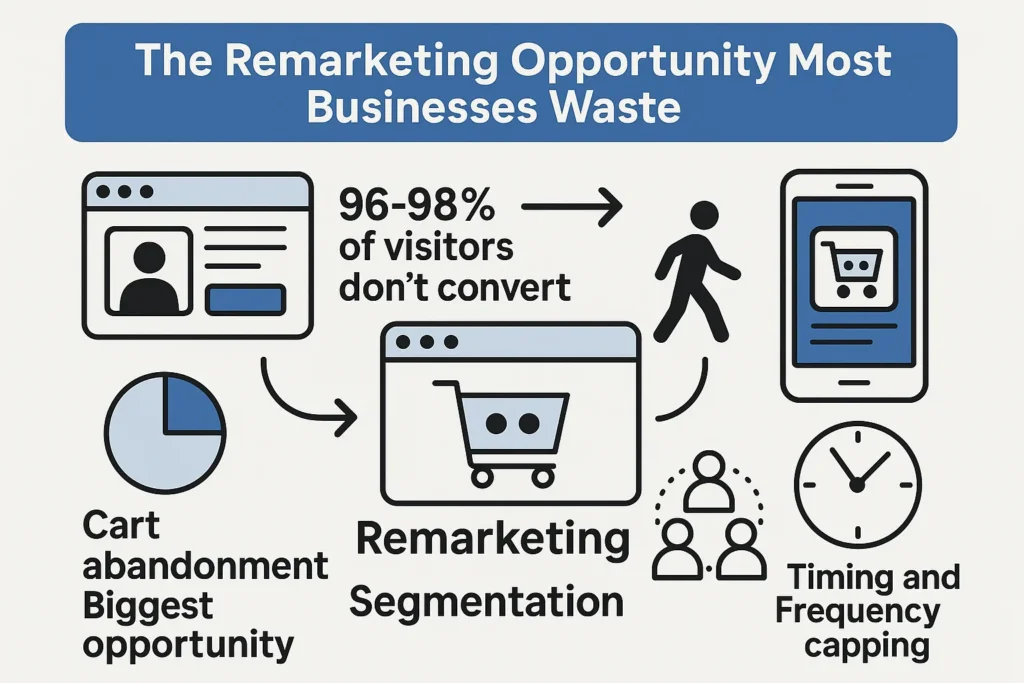
Here’s a reality check: 96-98% of people who visit your site don’t convert on their first visit. They browse, they read, they consider—then they leave. Most businesses treat that as the end of the story. Smart businesses recognize that’s just the beginning.
Remarketing lets you follow those visitors around the internet, showing ads that bring them back to complete actions they didn’t take initially. The targeting precision available is incredible—you can show different ads to people who viewed product pages versus pricing pages versus blog posts. Someone who spent five minutes looking at specific products needs different messaging than someone who bounced after ten seconds.
Cart abandonment represents the biggest remarketing opportunity for ecommerce businesses. Research shows remarketing can reduce abandonment rates and increase conversions by 25%. People add items to carts then leave for dozens of reasons—they got distracted, wanted to compare prices elsewhere, needed to check with a partner, or simply weren’t ready to buy yet. Remarketing ads remind them about those abandoned items as they browse other sites or social media.
The segmentation possibilities make remarketing incredibly powerful. Create separate audiences for homepage visitors, product page viewers, people who started checkout but didn’t complete it, past customers, and high-value prospects. Each segment gets tailored messaging that speaks to their specific situation and stage in the buying journey.
Timing matters with remarketing too. Someone who abandoned a cart 30 minutes ago needs immediate attention—show them ads within hours offering a small incentive to complete the purchase. Someone who visited six months ago needs re-engagement messaging focused on what’s new or changed since they last looked. The lookback window determines how long after a visit someone remains in your remarketing audience.
Frequency capping prevents annoying people with your ads constantly. Seeing the same ad three times might be effective; seeing it thirty times gets irritating and damages your brand. Proper remarketing balances staying top-of-mind with respecting that people need time to make decisions.
Most businesses either don’t use remarketing at all, or they set up basic campaigns showing generic ads to everyone who visited their site. The opportunity lies in sophisticated segmentation that delivers relevant messages matched to specific behaviors and interests.
Strategic Audience Targeting That Actually Works
Beyond remarketing, audience targeting in 2025 has become far more sophisticated than basic demographic categories. The platforms now let you layer multiple audience signals to reach precisely the right people at the right moments.
In-market audiences target people actively researching or comparing products in specific categories. These are high-intent users close to making purchase decisions, making them valuable targets worth bidding more aggressively for. Someone in-market for “home renovation services” is worth far more than someone with a general interest in home improvement.
Affinity audiences group people by broader lifestyle interests and habits. While not always high-intent, they’re useful for building awareness and reaching larger pools of people likely interested in what you offer. A fitness equipment company might target “fitness enthusiasts” knowing that broad group contains potential customers even if they’re not actively shopping right now.
Customer Match lets you upload email lists or CRM data to reconnect with existing customers or warm leads. This is ideal for upselling, cross-selling, or re-engaging people who bought from you before. You can also create lookalike audiences based on your best customers to find similar people likely to be interested.
The real power comes from audience layering—combining multiple targeting criteria to narrow focus on the most valuable segments. You might target people who are both in-market for your product category and have household incomes above a certain threshold. Or people who visited your site previously and are currently searching for competitor brand names.
Demographic layering adds another refinement layer. Age, gender, parental status, education level, and household income all influence purchase behavior. A luxury product advertiser might layer in-market audiences with high household income demographics to focus spend on people who can actually afford their offerings.
Location targeting serves as a foundational layer everything else builds on. You might target “home improvement shoppers” specifically in your service area to advertise renovation services locally. Combining location with other audience signals ensures ads reach the right people in the right places.
The observation versus targeting setting determines whether audience layers restrict who sees ads or just provide data for bid adjustments. Observation mode lets you gather performance data without limiting reach—useful for testing which audiences convert best before committing budget exclusively to them.
Why Professional Management Transforms Performance
This is where a google ads agency delivers tremendous value through expertise businesses can’t easily replicate internally. Professionals build landing pages specifically designed for conversion—clear value propositions, single focused calls-to-action, mobile-optimized experiences, fast load times, and compelling social proof. They test variations systematically to identify which elements drive the highest conversion rates.
The remarketing implementation gets handled properly too. Agencies create sophisticated audience segments based on visitor behavior, then develop tailored messaging for each segment. They set appropriate frequency caps, lookback windows, and bid adjustments that balance staying visible with avoiding ad fatigue. They integrate Facebook retargeting with Google campaigns to create omnichannel strategies that reach people across multiple platforms.
Audience targeting becomes strategic rather than guesswork. Professionals layer multiple signals to identify high-value segments worth focusing budget on. They use observation mode to gather data on which audiences convert best, then shift to targeting mode once patterns emerge. They adjust bids based on audience performance—bidding more aggressively for in-market audiences and past converters, less for cold traffic.
The testing never stops either. While some landing pages run, others test variations on headlines, copy, images, forms, and CTAs. Winning elements get incorporated into new versions, creating continuous improvement cycles that compound performance over time. Remarketing creative gets refreshed regularly to prevent fatigue. Audience segments get refined as more conversion data reveals which characteristics predict success.
Platform complexity has increased dramatically with new targeting options, campaign types, and automation features launching constantly. Demand Gen campaigns replaced Discovery ads. Performance Max added new controls for negative keywords and device targeting. Audience targeting evolved from simple demographics to sophisticated layering systems combining behavioral, demographic, and interest signals. Staying current with these changes requires dedicated attention most businesses don’t have.
Connecting Every Piece for Maximum Results
Campaign success requires every element working together cohesively. Great ads attract clicks. Optimized landing pages convert traffic. Remarketing brings back people who didn’t convert initially. Strategic audience targeting ensures you’re reaching the right people from the start.
When one piece fails, the entire funnel suffers. Poorly designed landing pages waste money spent on clicks that could’ve converted with better experiences. Missing remarketing means 96%+ of visitors disappear forever when they could’ve been brought back to convert later. Generic audience targeting burns budget on people unlikely to buy when that money could go toward high-intent segments.
Achieving excellence across all these areas requires expertise that takes years to develop, or immediate access through a google ad marketing agency that already possesses these capabilities. For businesses focused on growth, the choice is straightforward—advertising optimization isn’t their core competency, so partnering with specialists who live and breathe conversion optimization makes strategic sense.
The alternative is continuing to waste money on campaigns that generate clicks without conversions, missing remarketing opportunities that could double or triple results, and using basic audience targeting when sophisticated layering would reach far more valuable prospects. Smart businesses recognize that maximum campaign performance comes from expertise applied across every touchpoint in the customer journey.
Success happens when landing pages match ad promises exactly, remarketing brings back unconverted visitors systematically, and audience targeting focuses budget on the segments most likely to convert. Getting all these pieces working together optimally is what separates campaigns that barely break even from campaigns that deliver 3-5x returns on ad spend.

